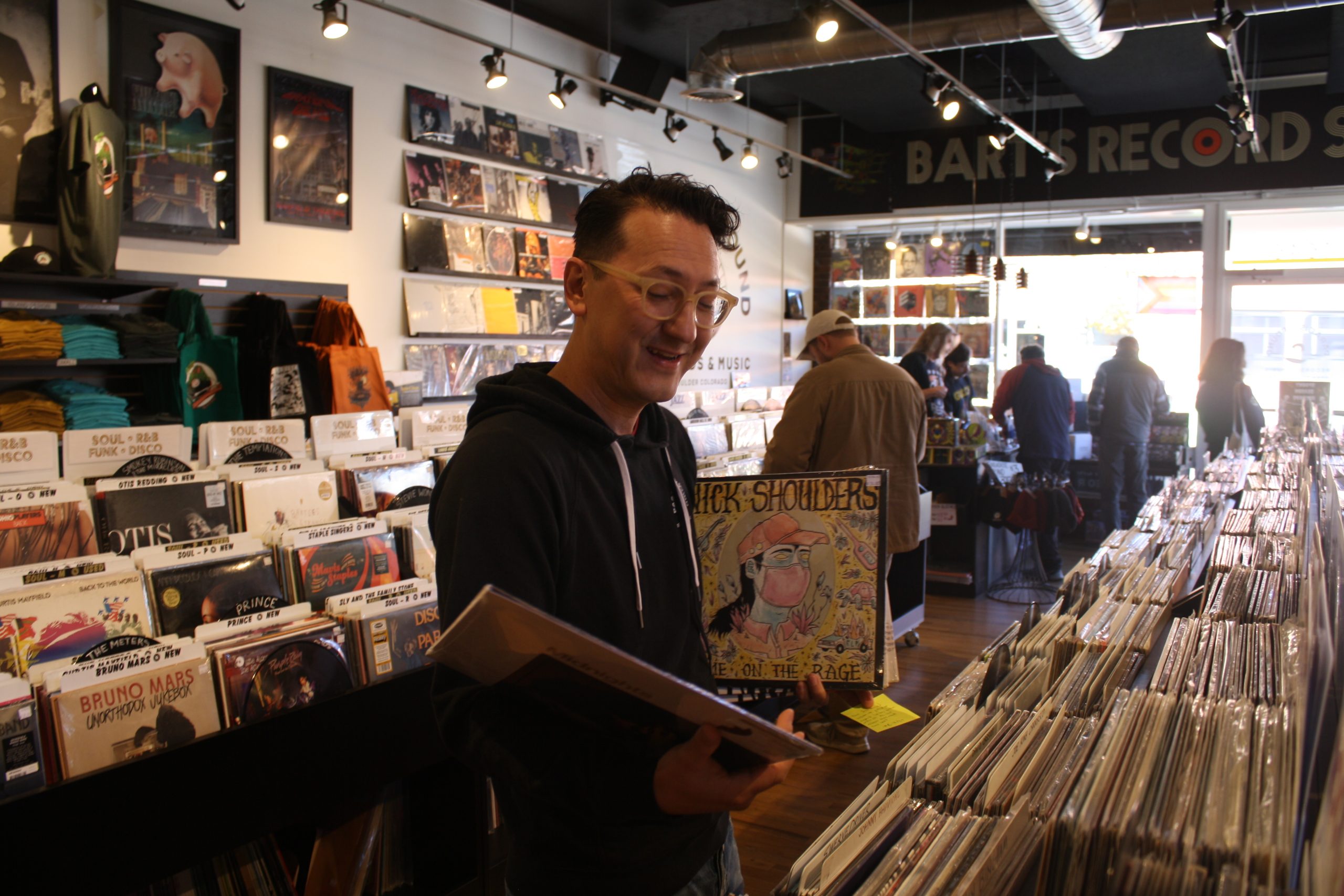
More than 30 years after the release of Passion and Warfare, Steve Vai’s landmark instrumental solo album and an essential component of the instrumental rock canon, the guitar legend found himself early this year with a surprise No. 1 album. Debuting in the top slot of the Hard Rock Albums chart, the 62-year-old musician’s Inviolate marks his 10th solo release, proving that some currency does not devalue over time.
Although, it wasn’t quite his first chart-topping album.
“I think Passion and Warfare was No. 1 in some other countries,” he said during a recent chat with Boulder Weekly. “It’s been a while. But it’s really nice at 62 to be able to release an instrumental guitar record that does well.”
In an age of electronic music, dance pop, retro soul and hip-hop, it may come as a surprise that artists like Vai, Joe Satriani and Eric Johnson — even relative newcomers like Guthrie Govan — are able to thrive releasing and touring guitar music. Massive props are in order, it seems, to be able to maintain and sustain that genre.
“Well, massive props to the audiences that are still interested,” he countered. “I’ve noticed that there is a collective of guitar lovers in every corner of the globe — people that just love that instrument. It’s a small slice of the industry in a sense, but it’s a powerful one. And it’s great because it adds to the diversity.
“And when you’re respected in that field, or any particular field, it’s nice because as a guitar player, a known guitar player, you can tour the entire world,” he continued. “People will come out to see another guitar player. That’s why guys like me and Joe and Eric and others can have thriving careers.”
‘Crossroads’ and kinetics
Vai’s career extends back to the late ’70s, when he dropped out of Berklee to work with Frank Zappa, first as a transcription assistant and later as a guitarist in his band. He eventually went on to play in Alcatrazz, working as David Lee Roth’s showcase guitarist in his post-Van Halen incarnation, and then briefly in the glitter-metal band Whitesnake behind David Coverdale. Vai also famously portrays Ralph Macchio’s guitar-duel opponent, Jack Butler, in the 1986 axeman-fantasy film Crossroads, bested by Macchio’s Telecaster read of Paganini’s dizzying “Caprice No. 5.” (In fact, Vai played both sides of the duel.)
Those, of course, were quite different days. If pyrotechnics and ferociously kinetic lead guitar playing was the carrion that fed the beast, it was Vai’s deceptively deep musical knowledge (he also composes orchestral music) and relentlessly inventive technique — not just fast, but melodically provocative and harmonically feral — that sustained his repute and his fanbase well after the stadium lasers dimmed for good.
But kinetics are always catnip for the metal-inclined guitar aficionado, which begs the question of whether the vast legion of aspiring shredders with transcriptions and YouTube tutorials at their disposal are missing something by not coming up the way Vai himself did: learning with great players, being on stage and doing things at a young age like reading Zappa charts and being able to nail them. Perfectly. Every time.
Vai learned theory and how to read (and write) music early and well. In an interview some years ago, studio guitarist Larry Carlton told Boulder Weekly that he became successful in the Los Angeles session scene in the early- and mid-’70s primarily because he could sight-read charts. He got all the work he could handle, he thought, because he had that skill, and a lot of his contemporaries, as technically accomplished as they may have been, couldn’t.
But Vai mostly shrugs off old-school dogma.
“I think people navigate to the things that are interesting to them, that are engaging, and they pretty much avoid other things that aren’t interesting,” he said. “I see a lot of that in the guitar community when it comes to things like music theory, reading music and understanding the written note.
“If a person is interested in learning that stuff, they’ll learn it, they’ll navigate themselves to it, they’ll make it their own,” Vai continued. “And for those people like Larry and many guitar players and musicians who love the idea of understanding music, they’re going to figure it out. And for those who don’t have an interest in it, I would say if you don’t have an interest because it seems intimidating to you, then experiment with learning it. Because it’s not difficult at all.”
“But for others who have no interest, that’s fine, there’s nothing wrong with that. Navigate to other things. I mean, you can’t fault Jeff Beck for not being able to sight read like Larry Carlton. You’re going to get to wherever your intentions take you.”
‘The Chosen One’
Speaking of Beck, a couple slower cuts on Inviolate, notably the poised “Greenish Blue,” recall some of Beck’s earlier solo work, like the delicate microtonal blues of “’Cause We’ve Ended As Lovers” or “The Pump” — and, by extension, Roy Buchanan’s Telecaster blues testaments.
“Yeah, I would agree, because those guys are just in my blood,” Vai said. “When I was a kid, Beck and Buchanan were both heroes of mine.
“And this morning, right before this interview, my guitar tech, Doug MacArthur, who’s a huge Beck fan, sent me an audio clip of Beck and Johnny Depp doing [he sings a line from Marvin Gaye’s “What’s Going On”] Mama, mama, there’s too many of you cryin’… You have to hear it! The man just does not cease to improve, he just goes deeper and deeper, every note is made of gold. I call him The Chosen One.”
What Vai was hearing and responding to in that cover of Gaye’s most prayerful song was Beck’s gentle and achingly lithe melody line, gently recalling Gaye’s breezy and tenderly urgent vocal. Phrasing, a subtle and elusive muse, is something Vai says has emerged as a treasured virtue in his own playing.
“I did so much of the other stuff, and as you get older, you look for different things. And these days, phrasing is of the utmost value for me,” he said. “When I listen to the solo on ‘Little Pretty’ (Inviolate’s showcase track), there’s not a note wasted. There’s some little shreddy bits in it, but it’s not gratuitous.”
Heroes come and go, their stock rising and falling with time and changing tastes. For Vai, the arrival of a new and successful record coincides with the release of an hour-long film on the guitarist’s first 30 years, assembled from archive footage, photos and interview clips by film archivist Alan Berry. The documentary includes every bit of minutiae about Vai’s upbringing: the bands, the guitars, the tours, the home studios and more. It’s an hour’s worth of everything Vai — a love letter to the fans, from a fan.
“I didn’t know he was making it,” Vai said. “But he sent it to me and… I couldn’t believe all the time and research he put into this.”
Didn’t Vai himself (who’s listed in the credits) contribute all that stuff?
“No. I sent him some photos and corrected some minor details and some pronunciation of some of the names. But that’s all,” he said.“I remembered it all, but I had forgotten talking about some of that stuff. He unearthed it all. As I’m watching it, all I could think was, ‘Where did he find the time, and the interest, and the information to do all this?’
“I was tickled because, if I had hired someone to do that, it wouldn’t have come out that way. They probably wouldn’t have had the same interest, so maybe they wouldn’t dig as deep,” he continued. “The other thing I liked about it is, there’s a part of my personality, and you can hear it in the music, that’s kind of quirky and silly and animated. And the way he presented it was kind of quirky, a little bit silly and a little bit animated.”
Ultimately, the film and Vai’s career tell the story of a kid from Long Island who dreamed of being a rock star and actually became one.
“Right? It snuck up on me.”
ON THE BILL: Steve Vai – Inviolate Tour. 7 p.m. Wednesday, Oct. 5, Boulder Theater, 2032 14th St.



